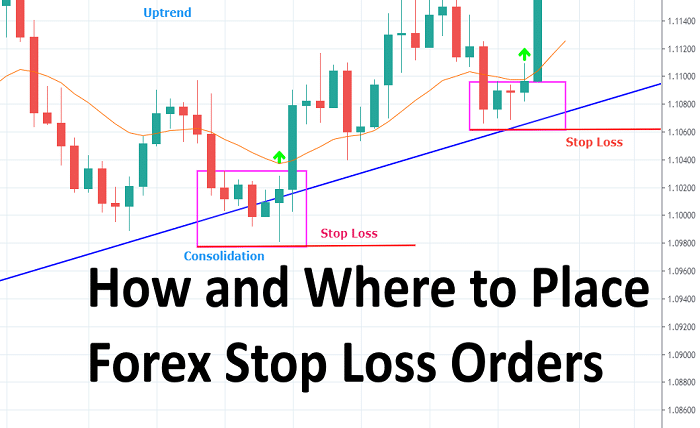
Introduction
Stop loss orders are a fundamental tool in the arsenal of any savvy investor or trader. These orders are designed to limit an investor’s loss on a position in a security, helping to protect against significant downturns in the market. Understanding stop loss orders is crucial for anyone involved in trading, as they offer a way to manage risk effectively.
A stop loss order is an order placed with a broker to buy or sell once the stock reaches a certain price. This type of order is used to prevent further losses on a stock that is moving in the wrong direction. By setting a stop loss order, investors can ensure that they exit a losing position before the loss becomes too large.
How Stop Loss Orders Work
Stop loss orders work by automatically triggering a buy or sell order when the price of a security reaches a predetermined level. For example, if an investor owns a stock currently priced at $50 and sets a stop loss order at $45, the stock will be sold if its price drops to $45. This mechanism helps to limit losses by ensuring that the investor does not hold onto the stock as it continues to decline.
Stop loss orders can be particularly useful in volatile markets, where prices can change rapidly. By having a stop loss order in place, investors can avoid the emotional decision-making that often leads to holding onto losing positions for too long. Understanding how stop loss orders work is essential for managing risk and protecting your investments.
Benefits of Using Stop Loss Orders
The benefits of using stop loss orders are numerous, making them a valuable tool for investors. One of the primary benefits is the ability to limit potential losses. By setting a stop loss order, investors can define the maximum amount they are willing to lose on a trade, which helps to manage risk effectively.
Another benefit is the reduction of emotional trading. Investors often struggle with the psychological aspects of trading, such as fear and greed. Stop loss orders help to remove emotion from the equation by automating the exit process. Additionally, stop loss orders can free up an investor’s time, as they do not need to constantly monitor their positions.
Types of Stop Loss Orders
There are several types of stop loss orders, each with its own specific use case. The most common types include:
- Fixed Stop Loss Order: This is the most straightforward type, where the stop loss level is set at a fixed price.
- Trailing Stop Loss Order: This order moves with the stock price, maintaining a set percentage or dollar amount below (or above, for short positions) the current price.
- Stop Limit Order: This order sets a stop price and a limit price. Once the stop price is reached, the order becomes a limit order rather than a market order.
- Guaranteed Stop Loss Order: This type of order guarantees that the stop loss will be executed at the specified price, regardless of market volatility.
Understanding the different types of stop loss orders allows investors to choose the one that best fits their trading strategy and risk tolerance.
Setting Stop Loss Orders: Best Practices
Setting stop loss orders effectively requires careful consideration and strategic planning. One best practice is to determine the appropriate stop loss level based on your risk tolerance and the volatility of the stock. For instance, in a highly volatile market, setting a stop loss order too close to the current price may result in premature execution.
Another best practice is to regularly review and adjust stop loss orders as market conditions change. This ensures that your risk management strategy remains aligned with your overall investment goals. Additionally, it’s important to avoid setting stop loss orders based on arbitrary levels; instead, use technical analysis and market trends to inform your decisions.
Common Mistakes with Stop Loss Orders
Despite their benefits, investors often make mistakes when using stop loss orders. One common mistake is setting the stop loss too tight, which can lead to frequent premature exits due to normal market fluctuations. Another mistake is setting the stop loss too wide, which can result in significant losses before the order is triggered.
Another frequent mistake is failing to adjust stop loss orders in response to changing market conditions. As the market evolves, so should your stop loss strategy. Lastly, relying solely on stop loss orders without considering other risk management tools can be problematic. A comprehensive approach to risk management is essential for successful trading.
Stop Loss Orders in Different Market Conditions
Stop loss orders can behave differently in varying market conditions. In a stable market, stop loss orders can provide a reliable means of protecting investments. However, in a highly volatile market, the risk of stop loss orders being triggered prematurely increases.
In trending markets, trailing stop loss orders can be particularly effective. They allow investors to lock in profits while still participating in the upward trend. In contrast, in a declining market, fixed stop loss orders can help to limit losses quickly. Understanding how stop loss orders perform in different market conditions is key to using them effectively.
Integrating Stop Loss Orders into Your Trading Strategy
Integrating stop loss orders into your overall trading strategy involves careful planning and execution. First, determine your risk tolerance and investment goals. This will help you decide where to set your stop loss levels. Next, choose the type of stop loss order that best fits your trading style and the specific security you are trading.
Regularly review and adjust your stop loss orders based on market conditions and your investment performance. Incorporate other risk management tools and strategies to complement your stop loss orders. By integrating stop loss orders into a comprehensive trading strategy, you can enhance your ability to manage risk and achieve your investment objectives.
Case Studies: Successful Use of Stop Loss Orders
Examining case studies of successful use of stop loss orders can provide valuable insights and practical examples. One such case study involves an investor who used trailing stop loss orders to capture profits during a bull market. By setting the trailing stop at a percentage below the market price, the investor was able to lock in gains as the stock price rose.
Another case study highlights an investor who used fixed stop loss orders to limit losses during a market downturn. By setting a stop loss at a predetermined level, the investor was able to exit the position before the losses became too significant. These case studies demonstrate the versatility and effectiveness of stop loss orders in various scenarios.
Conclusion:
In conclusion, stop loss orders are an indispensable tool for investors seeking to manage risk and protect their portfolios. Understanding how stop loss orders work, their benefits, types, and best practices is crucial for successful trading. By integrating stop loss orders into a comprehensive trading strategy, investors can mitigate potential losses and enhance their overall investment performance.
Whether you are a seasoned trader or a novice investor, stop loss orders can help you navigate the complexities of the financial markets with greater confidence and control. As the market continues to evolve, staying informed about the latest strategies and tools, including stop loss orders, is essential for achieving long-term investment success.
FAQs
1. What is a stop loss order? A stop loss order is an order placed with a broker to buy or sell a security once it reaches a predetermined price, helping to limit potential losses.
2. How do stop loss orders work? Stop loss orders work by automatically triggering a buy or sell order when the price of a security reaches a specified level, thereby preventing further losses.
3. What are the benefits of using stop loss orders? The benefits include limiting potential losses, reducing emotional trading, freeing up time, and providing a systematic approach to risk management.
4. What are the different types of stop loss orders? Common types include fixed stop loss orders, trailing stop loss orders, stop limit orders, and guaranteed stop loss orders, each serving different purposes.
5. How should I set my stop loss orders? Set stop loss orders based on your risk tolerance, market volatility, and technical analysis, regularly reviewing and adjusting them as market conditions change.





